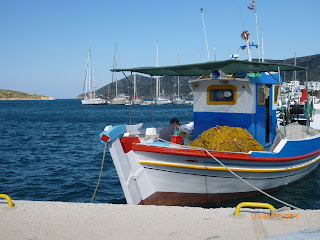We flew from Thessaloniki to Istanbul to meet up with our friends whom we had left in Lesbos . Four days
earlier a bomb had gone off in Istanbul
airport. To our surprise, there was no
sign of damage anywhere. Apparently the
airport was up and running six hours after the blast.
The next day we flew into an airport in Georgia , just
over the Turkish border. We were stamped
into Georgia and then
straight back out and were put onto a bus to drive us over the border back to Turkey . Here in
Hopa, an hour away, we had our first glimpse of the Black
Sea . From here we were met by our friends’ university colleague.
He took us to his village home, high in the mountains of Artvin Province
 |
| Village home |
We met his wife, daughter and parents-in-law.
We stayed for three days, being fed like kings by 90 year old grandmother
Nezaket
 |
| Grandmother Nezaket |
and we were driven through the densely forested mountains to numerous
waterfalls and lakes. It was not a good
idea to look down on some of the hairpin bends on the little sand roads! The
mountains are covered in spruce, pine, oak and hazelnut and it is a tea growing
area. The tea is grown on impossibly
steep slopes and the villagers use flying foxes to get their bags of clippings
back down the slopes. There are whole
mountainsides of neatly pruned tea bushes, as they are harvested three times in
a season. The farmers use hand shears
with bags attached to catch the clippings as they work. Although 80% of the
world’s hazelnuts come here, tea has now replaced hazelnut as the dominant
produce from this area. Having seen how
much tea people drink in Turkey ,
we are not surprised there is none left to export!
We joined a tour. They
took us to the town of Batumi in Georgia where we saw a Las Vegas style waterfront, complete with 5-star hotels and
numerous casinos. The sad thing is that one or two roads back, the roads are
sand (and become mud with the high rainfall), an unguarded railway line runs
through the town, washing is strung across the streets and the buildings are
Soviet style, faced with corrugated iron and mostly unmaintained. The high
mountains surrounding the town are very beautiful. They too, like the ones across the border in Turkey , are
densely forested. We went to a winery in Georgia which, to our surprise, had
photos of a visit by Hilary Clinton.
Back in Turkey ,
we went into the high villages in Artvin
Province and stayed in a traditional
lodge in the village
of Ayder
The houses are built of stone and
wood, on impossibly steep slopes and are very picturesque, dotted in amongst
the forests. From here we hiked to the
snowline and some of our party had a swim in a lake with ice floes floating in
it.
Because of the very high rainfall,
there are countless, very beautiful waterfalls in this part of Turkey . Although we were there in the rainy season, we
were lucky to have only one day of rain-but did it rain! It, in itself, was
beautiful, driven rain with the mountain peaks appearing and disappearing
behind the clouds. The rivers were
swollen and we had an exhilarating ride down one of these in a raft.
Once our tour was over we slowly made our way along the
Black Sea coast, back to Istanbul . The prevailing wind comes from the north, so
the Turkish coast is a lee shore and mostly deep until the edge. We saw only
one sailing boat, in harbour, in the two weeks we were there and although
many small harbours have been built, most of them are only used by small
fishing boats. In most of the towns in the east of Turkey people
speak no Western languages. We were very glad to have our Turkish-speaking
friends with us! We were pleased we elected not to sail and to travel overland
instead.
We awoke one morning to find that there had been an
attempted coupe. We heard the speakers
on the minarets calling people to mass meetings in the town squares and TV news
coverage consisted of arrests and
speeches by politicians. We heard gunfire on two occasions and saw numerous
flags being flown from buildings, cars and even the cable cars which took us up
a mountain in one of the towns. This was continuing when we left Turkey two
weeks later.
We traveled to Amasya to see the rock tombs of the Pontian
kings. After a hot climb to the tombs, we wandered along the river front,
amongst the quaint Ottoman houses. Of interest to sailors, we found a statue of
Strabo, an ancient Greek from this region, who was the first known Geographer. Sofranbolo,
now Heritage
 |
| Rock tombs of Pontian Kings, Amasya |
Listed, has an unspoilt old town, an exceptional example of
Ottoman architecture. Here we enjoyed shopping in the little shops in the
quaint stone alleyways.
A highlight was a visit to the ancient capital of the
Hittites, in central Anatolia , with it’s
imposing sphinx gateway and reproduction of burial sites as they had been
found.
These were the people who defeated Ramses II of Egypt , later
making the first recorded treaty between two nations.
The other very beautiful
site we visited was the monastery of Sumela, 1600 years old. It is a very large monastery, on a very steep cliff, carved into the
rockface and perched above a river way below it. As there are no longer Christians left in
this area, it is now a museum. It is currently being restored and unfortunately
we were not allowed to enter.











































